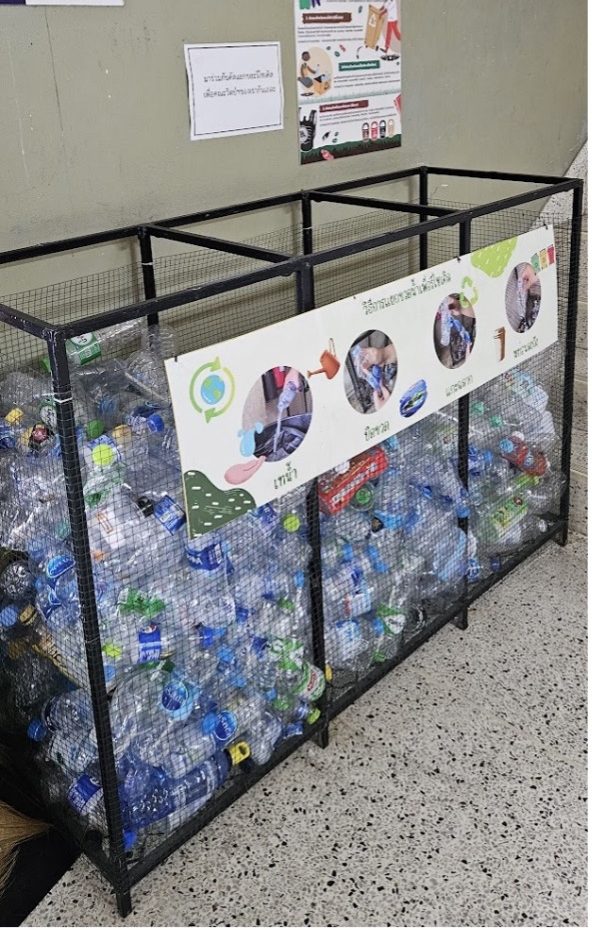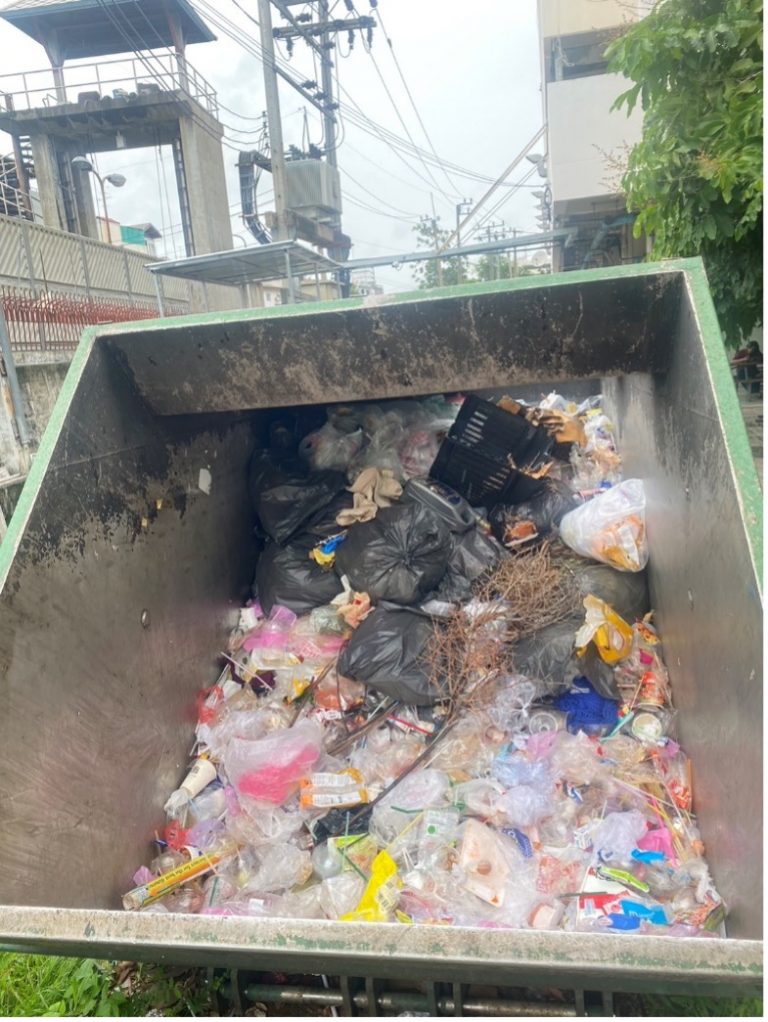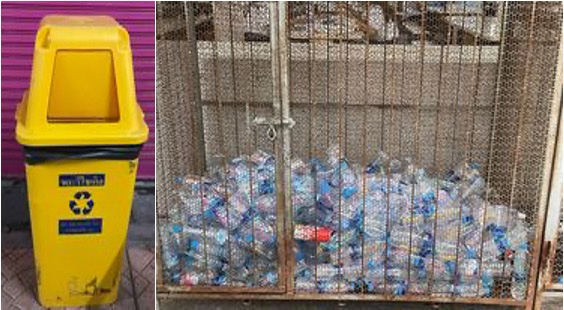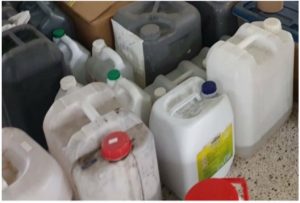Waste (WS)
Table of contents
The Total Amount of Inorganic Waste Produced
Types of Waste | North Bangkok Campus | Thewet Campus | Chotiwet Campus | Phra Nakhon Commercial Campus | Chom Thong Campus | Amount (tons) |
Inorganic non-toxic | 247.23 | 88.78 | 54.3 | 148.43 | 0.95 | 539.69 |
– Soft plastic, foam, etc. (in dumpsters) | 242.37 | 81.92 | 49.61 | 143.99 | 0.87 | 518.76 |
– Hard plastic, can, glass and hard paper | 4.13 | 1.01 | 2.85 | 1.83 | 0.08 | 9.9 |
– Printed paper | 0.73 | 5.85 | 1.84 | 2.61 | – | 11.03 |
Description:
The table illustrates the volume of inorganic waste generated by various university stakeholders, including staff, students, and food stall owners, across all campuses. The total volume of inorganic, non-toxic waste amounted to 539.69 tons. Among the campuses, the North Bangkok Campus was the largest contributor, producing 247.23 tons, followed by the Phra Nakhon Commercial Campus with 148.43 tons.
The majority of the inorganic, non-toxic waste consisted of soft plastics and foam, collectively amounting to 518.76 tons. These materials are currently stored in dumpsters, awaiting collection by municipal waste services.
In addition to soft plastics and foam, the remaining types of inorganic, non-toxic waste include hard plastics, metal cans, glass, cardboard, and printed paper. The university is actively focusing on promoting the reuse and recycling of these materials through both internal initiatives and collaboration with local recycling services.
The Total Volume of Inorganic Waste Treated
Types of Waste | Amount (tons) | ||
Total | Reused | Recycled | |
Inorganic non-toxic | 539.69 | 4.9 | 13.94 |
– soft plastic, foam, etc. | 518.76 | – | – |
– hard plastic, hard paper and glass | 9.9 | – | 8.91 |
– printed paper | 11.03 | 4.9 | 5.03 |
Description:
Inorganic waste was generated across all university campuses by various stakeholders, including staff, students, and food stall operators. The majority of this waste consisted of soft plastics and foam, which are primarily handled by municipal waste services, as previously noted.
The table above outlines the types of inorganic waste that the university can manage. As a baseline, a total of 539.69 tons of inorganic, non-toxic waste was recorded. Of this amount, 4.9 tons of one-sided printed paper were reused. Additionally, 5.03 tons of two-sided printed paper, along with 8.91 tons of hard plastic, cardboard, and glass, were collected by local recycling companies.
In total, 18.84 tons of inorganic waste, or 3.49% of the overall inorganic, non-toxic waste, was successfully treated through reuse and recycling initiatives.
Inorganic waste treatment
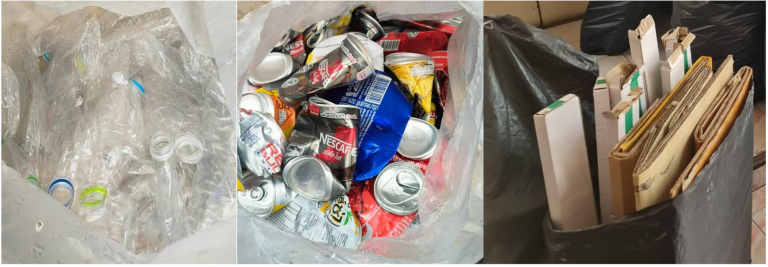
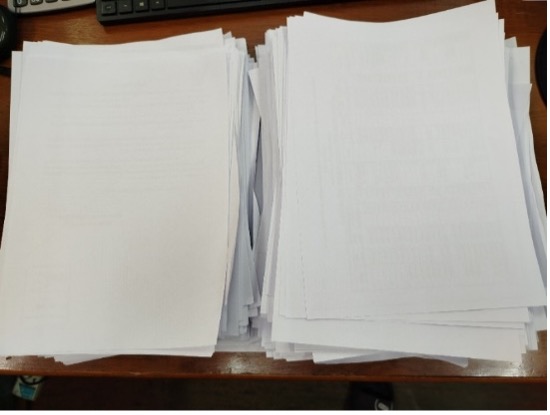
Description:
Rajamangala University of Technology Phra Nakhon has prioritized sustainable waste management practices, with particular focus on wastepaper reduction. In response to ongoing concerns, the university has implemented various initiatives aimed at minimizing paper usage and promoting a more environmentally conscious working system. These efforts include the organization of activities designed to reduce paper consumption, particularly through the reuse of one-sided printed paper by both students and staff. This initiative has played a pivotal role in fostering a culture of sustainability within the campus community.
In addition to paper management, the university has launched a permanent campaign focused on the sorting and recycling of specific types of inorganic waste. Plastic bottles, metal cans, and hard paper are segregated at source and subsequently collected by local recycling services. This system not only reduces the volume of waste sent to landfills but also aligns with broader environmental goals, including resource conservation and waste minimization.
As a result of these efforts, the university successfully treated 18.84 tons of inorganic waste, representing 3.49% of the total 539.69 tons of inorganic, non-toxic waste generated. While this figure reflects positive progress, the university remains committed to expanding its recycling and waste reduction initiatives to further reduce its environmental footprint. Future plans include extending recycling programs, enhancing awareness campaigns, and improving waste sorting infrastructure to ensure continued success in sustainable waste management.
| Types of Waste | Amount (tons) |
| Toxic | 1.73 |
| – electronics | 0.61 |
| – lab chemicals | 0.94 |
| – batteries | 0.18 |
Description:
The table above highlights the various types of toxic waste produced at Rajamangala University of Technology Phra Nakhon. Due to the relatively small quantities involved, the university reports the overall volume of toxic waste generated across all campuses, rather than distinguishing between individual locations. This toxic waste consists primarily of electronic equipment, laboratory chemicals, and batteries, all of which pose potential environmental and health risks if not properly managed.
Of the total 1.73 tons of toxic waste generated, laboratory chemicals account for the largest share, comprising 0.94 tons. These chemicals, used primarily in scientific research and educational labs, require careful handling and disposal in accordance with environmental safety regulations. Batteries, another significant source of toxic waste, contributed 0.18 tons to the total, while discarded electronic devices, including computers and other equipment, amounted to 0.61 tons.
The university recognizes the importance of safe and responsible disposal of toxic materials to minimize environmental harm. Efforts are underway to enhance the waste management infrastructure, including the development of improved storage facilities for hazardous materials and the establishment of partnerships with certified disposal companies. Future strategies will also focus on reducing the production of such waste, including the promotion of alternative technologies and materials that are less hazardous to the environment.
By reporting on the total volume of toxic waste, Rajamangala University of Technology Phra Nakhon demonstrates its commitment to transparency and accountability in managing hazardous waste and to the ongoing improvement of its environmental sustainability practices.
The Total Volume of Toxic Waste Treated

Types of Waste | Amount (tons) | |
Total | Classified and treated | |
Toxic | 1.73 | 1.05 |
– electronics | 0.61 | 0.13 |
– lab. chemicals | 0.94 | 0.91 |
– batteries | 0.18 | 0.01 |
% treated = 1.05/1.73 * 100% = 60.69%
Description:
The table presents an overview of the treatment of toxic waste at Rajamangala University of Technology Phra Nakhon, revealing a total of 1.73 tons of waste generated. This total comprises 0.61 tons of electronic equipment, 0.94 tons of laboratory chemicals, and 0.18 tons of batteries.
A significant portion of the laboratory chemicals, amounting to 0.91 tons, was effectively classified and transferred to a certified waste management company for proper treatment. This process is essential in mitigating potential environmental hazards associated with the improper disposal of hazardous materials. Additionally, the table details the quantities of electronic waste and batteries that were sorted and sent to the certified company, specifically 0.13 tons of electronic waste and 0.01 tons of batteries. However, the report does not provide information regarding the remaining toxic waste collected by municipal treatment services.
In total, the quantity of treated toxic waste is 1.05 tons, representing 60.69% of the overall toxic waste generated.

